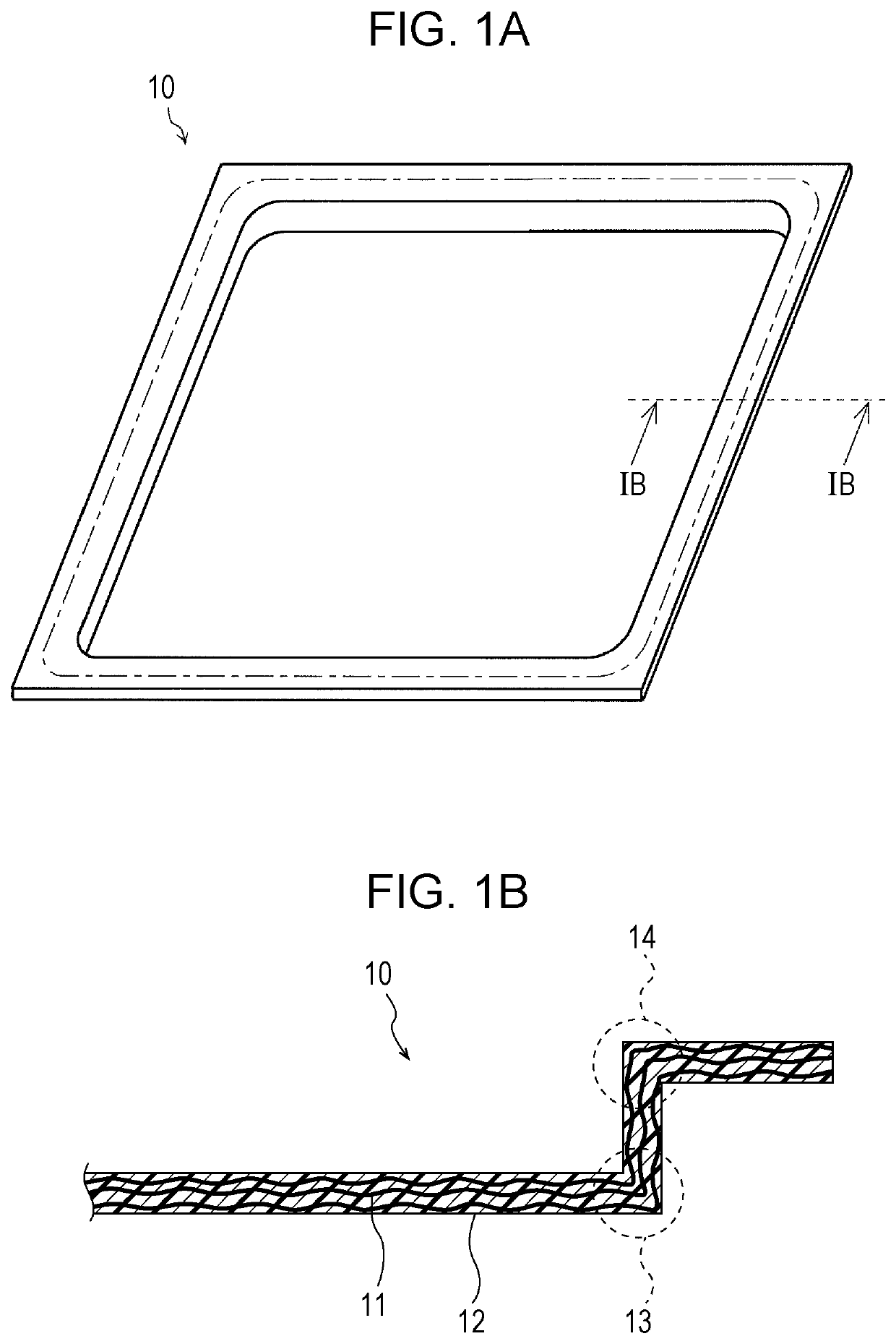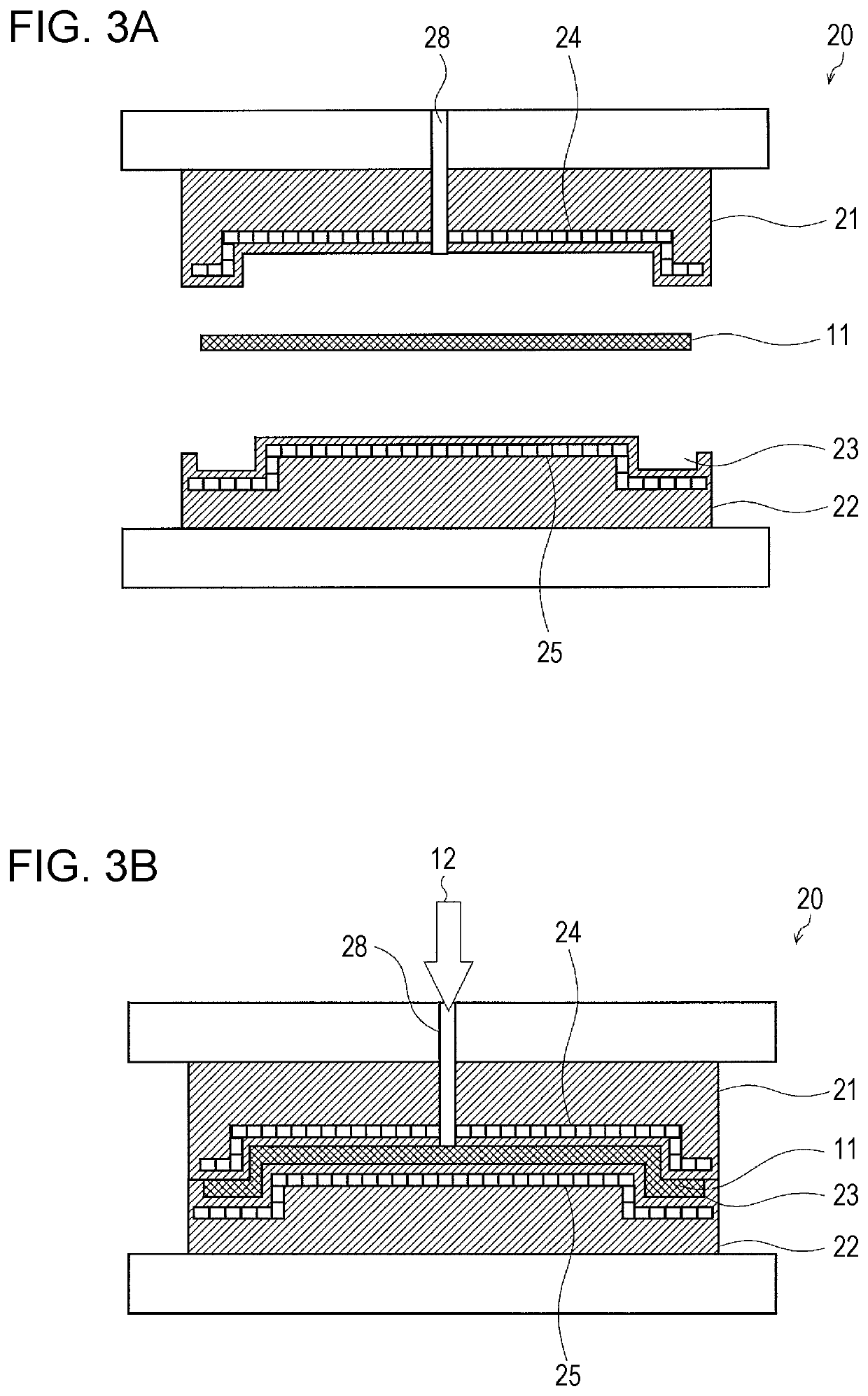Method for producing fiber-reinforced composite material and forming mold used for the method
a technology of fiber reinforcement and composite materials, applied in the direction of coatings, etc., can solve the problems of complex production process, difficult handling of reinforcing fiber sheets before resin impregnation, and disorganized sheets
- Summary
- Abstract
- Description
- Claims
- Application Information
AI Technical Summary
Benefits of technology
Problems solved by technology
Method used
Image
Examples
Embodiment Construction
[0019]A method for producing a fiber-reinforced composite material 10 according to an example of the present invention will be described below in detail with reference to the drawings. In the following description, the same reference numbers are basically used for the same components, and repeated description is omitted.
[0020]Referring to FIGS. 1A and 1B, the fiber-reinforced composite material 10 produced by the method for producing the fiber-reinforced composite material 10 according to this example will be described. FIG. 1A is a perspective view generally illustrating the fiber-reinforced composite material 10. FIG. 1B is a sectional view taken along line IB-IB in FIG. 1A.
[0021]The fiber-reinforced composite material 10 illustrated in FIG. 1A is, for example, a carbon fiber reinforced plastic (CFRP) and has a substantially tray shape as an example. FIG. 1A illustrates the fiber-reinforced composite material 10 just after taken out of the forming mold upon completion of the formi...
PUM
| Property | Measurement | Unit |
|---|---|---|
| magnetic field | aaaaa | aaaaa |
| magnetic | aaaaa | aaaaa |
| magnetic force | aaaaa | aaaaa |
Abstract
Description
Claims
Application Information
 Login to View More
Login to View More - R&D
- Intellectual Property
- Life Sciences
- Materials
- Tech Scout
- Unparalleled Data Quality
- Higher Quality Content
- 60% Fewer Hallucinations
Browse by: Latest US Patents, China's latest patents, Technical Efficacy Thesaurus, Application Domain, Technology Topic, Popular Technical Reports.
© 2025 PatSnap. All rights reserved.Legal|Privacy policy|Modern Slavery Act Transparency Statement|Sitemap|About US| Contact US: help@patsnap.com



